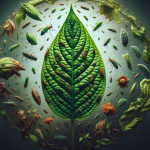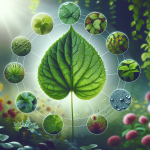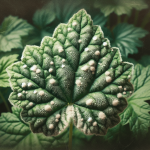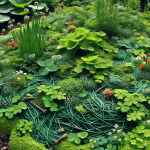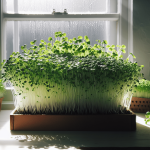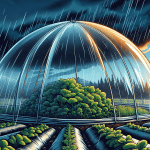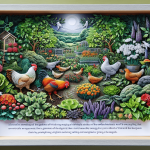This post may contain affiliate links. As an Amazon Associate, we may earn commissions from qualifying purchases.
Do you find yourself perplexed about whether your prized plants need more sunlight or shade? It can be a bit of a puzzle, but fear not! In this article, we will provide you with some simple yet effective indicators that will help you determine the needs of your greenery. Say goodbye to the guesswork and hello to thriving plants!
Understanding the Light Needs of Plants
The importance of light for plant growth
Light is an essential factor in the growth and development of plants. Through a process called photosynthesis, plants convert light energy into chemical energy, which is then used to fuel their growth and produce oxygen. Light determines the overall health and productivity of plants, influencing their ability to produce flowers, fruits, and seeds. Without adequate light, plants may become weak, leggy, or fail to thrive.
Different light requirements of plants
Different plants have varying light requirements based on their natural habitat and evolutionary adaptations. Some plants, known as “full-sun” or “sun-loving” plants, thrive in direct sunlight for a significant portion of the day. On the other hand, there are plants labeled as “shade-loving” or “low-light” plants that prefer indirect or filtered light. It’s important to understand the light requirements of each plant species to create an optimal growing environment.
Factors affecting light requirements
Various factors can affect the light required by plants and their ability to thrive. These factors include the season, geographical location, the intensity and duration of sunlight, and the presence of shade sources. Understanding these influences is crucial for creating the right conditions for your plants to thrive and avoiding any potential damage caused by inadequate or excessive light exposure.
Observing Plant Behavior
Signs of inadequate sunlight
When plants do not receive enough sunlight, they may exhibit certain signs that signal their need for more light. Look out for plants that have elongated, weak stems or leaves that appear pale or yellowish. Additionally, limited or no flowering could indicate insufficient light. If you notice these signs, it’s essential to provide more sunlight or adjust the positioning of your plants to a sunnier location.
Signs of excessive sunlight
While light is important for plant growth, excessive sunlight can also be harmful. Plants exposed to too much direct sunlight may experience sunburn, which manifests as wilting, scorched leaves, and dry soil. Other signs of excessive sunlight include stunted growth, leaf discoloration, and drying of the soil surface. Providing shade or moving plants to a more sheltered spot can help protect them from excessive sunlight.
Signs of inadequate shade
Some plants, particularly shade-loving species, require protection from intense sunlight. Signs of inadequate shade include leaf scorching or burning, leaf curling, and accelerated water evaporation from the soil. If your shade-loving plants show these signs, it’s important to provide them with additional shade, either by moving them to a shadier location or using various shading techniques such as umbrellas or shade cloth.
Signs of excessive shade
Plants that are deprived of sufficient sunlight due to excessive shade may exhibit signs of poor growth. Leaves may appear pale or have a dull, unhealthy appearance. Plants may also become leggy or start leaning towards the light source. Lack of flowering or reduced flower production is another indication of insufficient light. If you notice these signs, consider providing more light to the plants by adjusting their position or using artificial lighting.
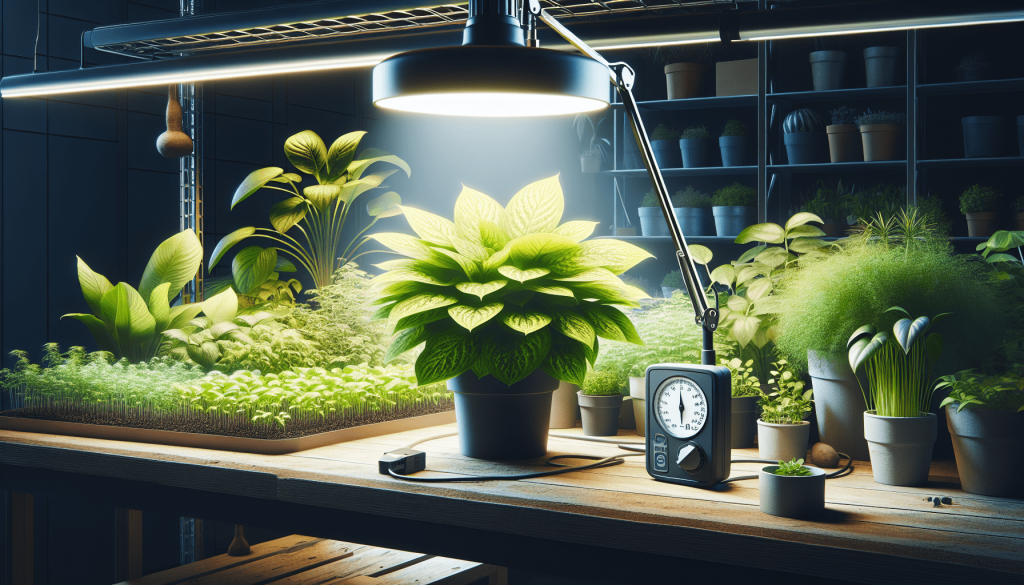
Assessing Current Light Conditions
Duration of sunlight in the area
To assess the light conditions in your garden or indoor space, start by observing how long the area receives direct sunlight during the day. Some plants require at least 6-8 hours of direct sunlight, while others can tolerate partial shade. Take note of which parts of your space receive the most sunlight and for how long. This observation will help determine the suitable plant species for each location.
Intensity of sunlight in the area
Light intensity refers to the strength or brightness of sunlight. To assess the intensity of sunlight in your space, observe how bright the light appears during different times of the day. High-intensity sunlight is usually bright and direct, while low-intensity sunlight is softer, filtered, or indirect. Understanding the light intensity will aid in identifying the plants that will thrive in your particular environment.
Shade sources in the area
Identify any natural or artificial shade sources in your surroundings that may affect the light exposure of your plants. These can include tall trees, nearby structures, or even adjacent buildings blocking the sunlight. Analyze how these shade sources cast shadows at different times of the day and determine which areas are most heavily shaded. This information will help you plan the placement of your plants accordingly.
Shade patterns throughout the day
Observe how shade patterns change throughout the day to identify areas that receive varying degrees of shade. Note how shadows move across your space and which parts receive the most shade during specific times. This knowledge is especially important for plants with specific light requirements, as it allows you to position them in areas that provide the required amount of shade or sunlight based on their preferences.
Researching Plant Species
General light requirements of common plants
Before selecting plants for your garden or indoor space, it is helpful to have an understanding of the general light requirements of common plant species. Many plants have similar light preferences, such as full sun, partial shade, or full shade. Researching online or referring to plant care guides can provide valuable insights into the light conditions that different plants thrive in.
Specific light requirements of your plant species
Once you have identified the specific plant species you wish to grow, it is important to research their individual light requirements. Not all plants within a species may have the same light preference. Some may tolerate more shade, while others require direct sunlight. Check reliable sources, such as plant labels or reputable gardening websites, to determine the specific light needs of your chosen plant species.
Consulting plant care resources
In addition to online research, consulting plant care resources such as books, magazines, or local gardening experts can provide valuable information on plant light requirements. Horticulturists, garden center staff, or experienced gardeners can offer personalized advice based on your specific location and plant choices. Utilize these resources to ensure the success of your plants and optimize their light conditions.
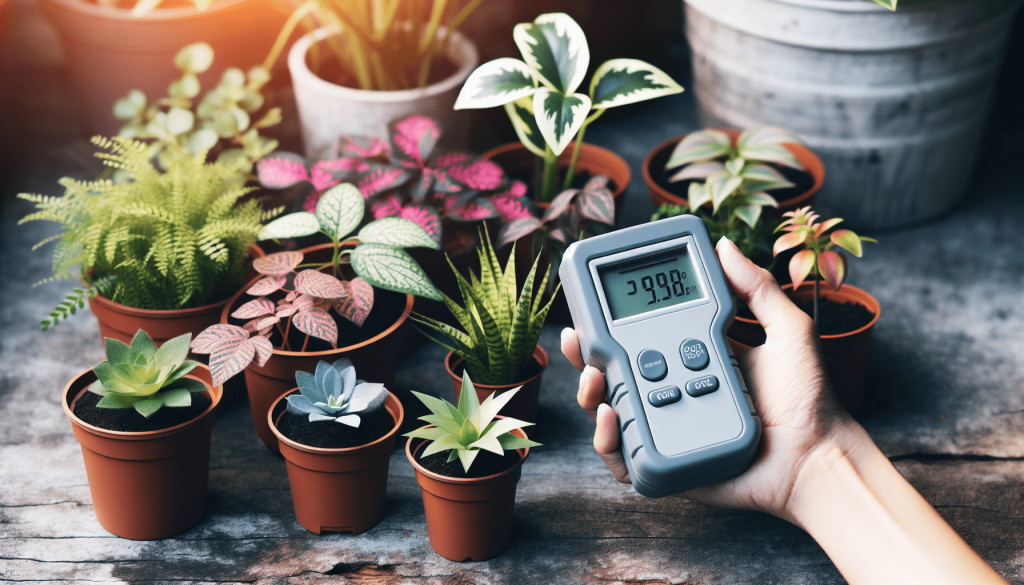
Testing Light Levels
Using a light meter
A light meter is a handy device that measures the intensity of light in a particular area. By using a light meter, you can obtain accurate readings of the light levels in different parts of your garden or indoor space. This tool allows you to compare light intensity and identify areas that receive the right amount of light for specific plant species. Light meters are widely available and come in various price ranges to suit different budgets.
Assessing shadows and brightness
A simple method to gauge light levels is by visually assessing shadows and overall brightness in different areas throughout the day. Observe how shadows are cast and how bright the light appears in different spots. You can compare the brightness of different areas and determine if they align with the light requirements of your plants. While not as precise as a light meter, this method provides a general sense of the available light.
Measuring light with a phone app
Another convenient option is to use a light meter app on your smartphone. These apps utilize the built-in light sensors in your phone to measure light intensity. They provide instant readings and can help you determine if a particular area receives adequate light for your plants. While not as accurate as dedicated light meters, these apps can still be useful for quick assessments and general guidance.
Adapting Light Conditions
Adjusting the position of plants
One of the simplest ways to adapt light conditions is by moving plants to different locations within your garden or indoor space. If a plant is not receiving enough light, relocate it to a sunnier area or closer to a window. Conversely, if a plant is getting too much sun, move it to a more shaded spot. Regularly monitoring the light conditions and adjusting plant positions accordingly will help meet their specific light requirements.
Using shades or blinds
In situations where natural sunlight is too intense, you can provide shade for your plants using shades, blinds, or curtains. These can be adjusted to filter or block the excess sunlight, protecting your plants from potential damage. Consider using sheer or translucent coverings that allow some light transmission while reducing the intensity of the sunlight. This method is particularly useful for indoor plants or those located near windows.
Pruning nearby trees or shrubs
If shade from nearby trees or shrubs is obstructing the light, pruning them selectively can help increase the available sunlight for your plants. Remove excessive branches or thin out the foliage to allow more light to penetrate the shaded areas. However, it is important to be cautious and seek advice from an arborist or experienced gardener to ensure proper pruning techniques and minimize damage to the trees or shrubs.
Installing artificial lighting
In situations where natural light is limited or insufficient, supplementing with artificial lighting can be an effective solution. Grow lights, specifically designed to provide the necessary spectrum of light for plant growth, can be used to simulate sunlight. LED grow lights are a popular choice due to their energy efficiency and adjustable light spectrum. Place the artificial lights near the plants according to their specific light requirements to ensure optimal growth.
Tracking Plant Growth and Health
Noting changes in plant appearance
Regularly observe the appearance of your plants as a way to monitor their response to light conditions. Pay attention to any changes in leaf color, shape, or texture. If plants appear healthy, vibrant, and produce flowers or fruits, it generally indicates that their light requirements are being met. Conversely, if plants show signs of stress, discoloration, or stunted growth, it may be an indication that adjustment to light conditions is necessary.
Monitoring plant growth rate
Another way to assess the impact of light on your plants is by monitoring their growth rate. Healthy plants exposed to optimal light conditions tend to exhibit steady and vigorous growth. Measure the height, width, or overall size of your plants periodically to track their progress. If growth is slow or plants appear stagnant, it may indicate a need for adjustments to their light environment.
Checking for pests or diseases
Inadequate or excessive light conditions can weaken plants, making them more susceptible to pests and diseases. Regularly inspect your plants for signs of pest infestation or disease, such as wilting, leaf damage, or unusual growth patterns. Addressing any issues promptly will help ensure the overall health and vitality of your plants.
Seeking Expert Advice
Consulting a local nursery or garden center
When in doubt about the light needs of your plants, it’s always beneficial to consult experts at your local nursery or garden center. These professionals have in-depth knowledge of plant care and can provide recommendations tailored to your specific location. They can assess your space, offer guidance on suitable plant choices, and provide advice on adjusting light conditions to promote optimal growth.
Contacting a horticulturist
For more complex or specialized inquiries, consider reaching out to a horticulturist. Horticulturists are plant science experts who can provide comprehensive advice on plant care, including light requirements. They can assess your specific conditions, provide detailed recommendations, and offer solutions to any challenges you may be facing. Contact local botanical gardens, universities, or horticultural societies for assistance in locating a horticulturist.
Joining gardening forums or communities
Another way to seek advice and learn from experienced gardeners is by joining gardening forums or communities. These online platforms allow you to connect with fellow enthusiasts who can provide insights based on their own experiences. You can ask questions, share information, and gain valuable knowledge on different plant species’ light requirements. Participating in these communities fosters a sense of camaraderie and opens opportunities for learning and growth.
Considering Climate and Seasonal Changes
Understanding the effects of climate on light conditions
Climate plays a significant role in determining the light conditions available for your plants. Different regions have varying levels of sunlight and shade throughout the year. Understanding your local climate, including seasonal changes in sunlight intensity and duration, will help in selecting plants that can thrive in your specific area. Consider researching your climate zone and consulting gardening resources that specialize in your region.
Adjusting light exposure during different seasons
As seasons change, the available sunlight and shade patterns also fluctuate. During the summer months, when sunlight is more intense, you may need to provide additional shade or adjust the positioning of your plants to protect them from excessive heat and strong sunlight. In contrast, during winter or in cooler climates, it might be necessary to relocate plants to sunnier areas to maximize light exposure. Being aware of the seasonal light variations will assist in maintaining optimal growing conditions.
Experimenting and Learning
Making gradual changes and observing plant response
Gardening is a dynamic process that involves experimentation and observation. When adjusting light conditions for your plants, it is important to make changes gradually. Sudden and drastic changes in light exposure can shock and stress plants, leading to adverse effects. Monitor the response of your plants to each adjustment and assess their growth, overall health, and appearance. This iterative process of experimentation and observation allows you to fine-tune the light conditions and ensure the best outcome for your plants.
Keeping a gardening journal
Maintaining a gardening journal can be invaluable for tracking the progress of your plants and documenting observations related to light conditions. Use the journal to record any changes made, such as plant repositioning, shading techniques applied, or artificial lighting methods used. Additionally, note any plant responses, positive or negative, to these changes. A gardening journal serves as a valuable reference for future adjustments and helps refine your gardening practices over time.
Learning from gardening experiences
Every gardening experience provides an opportunity to learn and improve. Reflect on your successes and challenges when it comes to providing the right light conditions for your plants. Take note of how different plant species respond to varying light conditions and adjust your gardening approach accordingly. Learning from your own experiences, as well as seeking insights from other gardeners, widens your knowledge base and enhances your ability to create thriving garden spaces.
Understanding the light needs of plants is crucial for cultivating healthy and vibrant greenery. By observing plant behavior, assessing current light conditions, researching plant species, testing light levels, and adapting light conditions accordingly, you can create an optimal environment for your plants to thrive. Regularly tracking plant growth and health, seeking expert advice when needed, considering climate and seasonal changes, and embracing a mindset of experimenting and learning will lead to successful and rewarding gardening experiences. So go ahead and let your green thumb guide you to create a flourishing haven of plant life!

